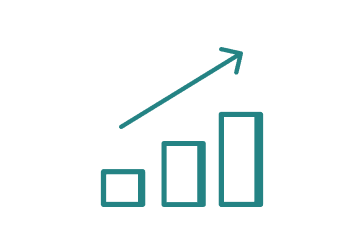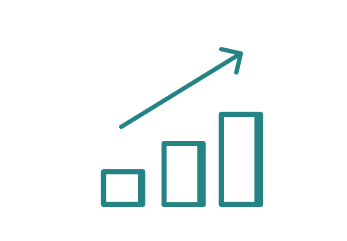There are many ways to gauge the health of your business, but perhaps none are more telling than the actual cash you have on hand. Cash flow is where the rubber meets the road, and despite the fact that it’s an important indicator of sustainability, many businesses continue to struggle with cash flow forecasting challenges.
The First Step to Protecting Your Cash Flow Is Predicting It
Cash flow is fluid and sensitive to change, especially for small and midsize businesses (SMBs). Consequently, it’s critical to watch it closely, anticipate fluctuations and course correct if necessary. A cash flow forecast helps you do that by estimating your cash flow over a certain period of time.
Good forecasting is just one way to improve your cash flow management. Not only does it help keep you afloat and on track for growth, it also positions you to:
- Ensure you can continue to pay suppliers and employees
- Separate the right opportunities from the risky ones
- Obtain financing and satisfy investors and lenders with detailed cash flow analysis
The stakes are even higher in times of disruption, when shifting sanctions, interest rates and prices directly impact your cash flow. Accurate, regular cash flow forecasting sets resilient companies apart from those that stumble through the storm by helping you navigate uncertainty with confidence.
4 Cash Flow Forecasting Challenges and How to Solve Them
Inaccurate data
The Cause
Many SMEs use manual processes to build a cash flow forecast, painstakingly collecting data from each business unit and external sources. Not only does this invite human error, it also puts you at the mercy of department siloes, requiring people to share around documentation. Even if you’re using an ERP system and treasury management systems, the lack of integration among them spells risk.
The Solution
Automating the collection and reconciliation of data improves accuracy and helps you make more reliable decisions, even amid uncertainty. When everyone is working with the same data, from the same source, your cash flow forecasts will have greater accuracy. Consider speaking to a consultant about how your business can effectively integrate systems and automate the process to reduce lift in your forecasting.
Outdated Information
The Cause
You’re about to launch a campaign. Disruption breaks out. The board wants forecasting solutions—now. Where do you turn? Last quarter’s forecast, which didn’t factor in a potential geopolitical conflict? Not being able to swiftly incorporate recent and relevant information is detrimental, and infrequent forecasting is often the culprit.
The Solution
A rolling forecast is continuously updated based on internal, external and macroeconomic conditions to ensure you’re working with the latest information that’s most relevant. Moving to weekly cash flow forecasting can help you identify a granular understanding of your business, such as invoice timing and immediate liquidity needs.
Over-Reliance on Historical Data
The Cause
Cash flow forecasting uses historical data to paint the future in the near and long term. But traditional models overemphasize the past. Historical data from the Spanish flu or the AIDs epidemic could not have predicted the onset or impact of COVID-19—an entirely different disease—on modern life. To make matters more difficult, the lack of confidence in failed traditional forecasting often stymies investment in updating the model.
The Solution
Businesses must accept that old models no longer serve them. By updating your model to include rapid scenario analysis and variance analysis, you can quickly identify the cause and impact of roadblocks and stop friction in its tracks. Using traditional models is akin to predicting the future but not exploring what you can do to control it (e.g., the impacts on cash flow of hiring a part-time admin). The forecasting solution? Change the way you conduct business forecasting.
Lack of Skilled Oversight
The Cause
Advanced forecasting requires specialization and experience to curate which features and tools, systems and vendors you need. The lack of institutional knowledge around modern forecasting often holds companies back from solving their cash flow forecasting challenges.
The Solution
Even if you don’t have the capacity to bring on a full-time analyst, there are cost-effective options for engaging talent. An on-demand consultant can streamline and standardize your approach, adding accountability and focus to ensure your cash flow forecast incorporates every variable that matters. They’ll define metrics, organize cross-functional teams and help you navigate and implement advanced techniques, while also making sure you don’t overinvest.
Unlike Uncertainty, Cash Flow Forecasts Are Within Your Control
All of these challenges in business forecasting have one thing in common: solving them requires nothing more than a willingness to shed a current model that’s ineffective.
Paro’s community of elite financial forecasting consultants and finance experts offer flexible, cost-efficient forecasting solutions with industry knowledge and technical expertise to fit your exact business needs. Ensure your business builds accurate cash flow forecasts to maximize your company’s potential.












